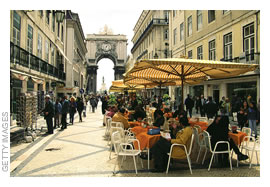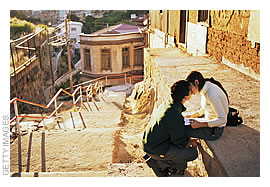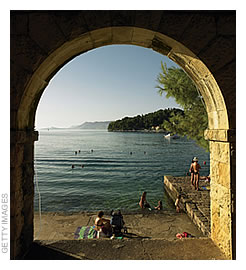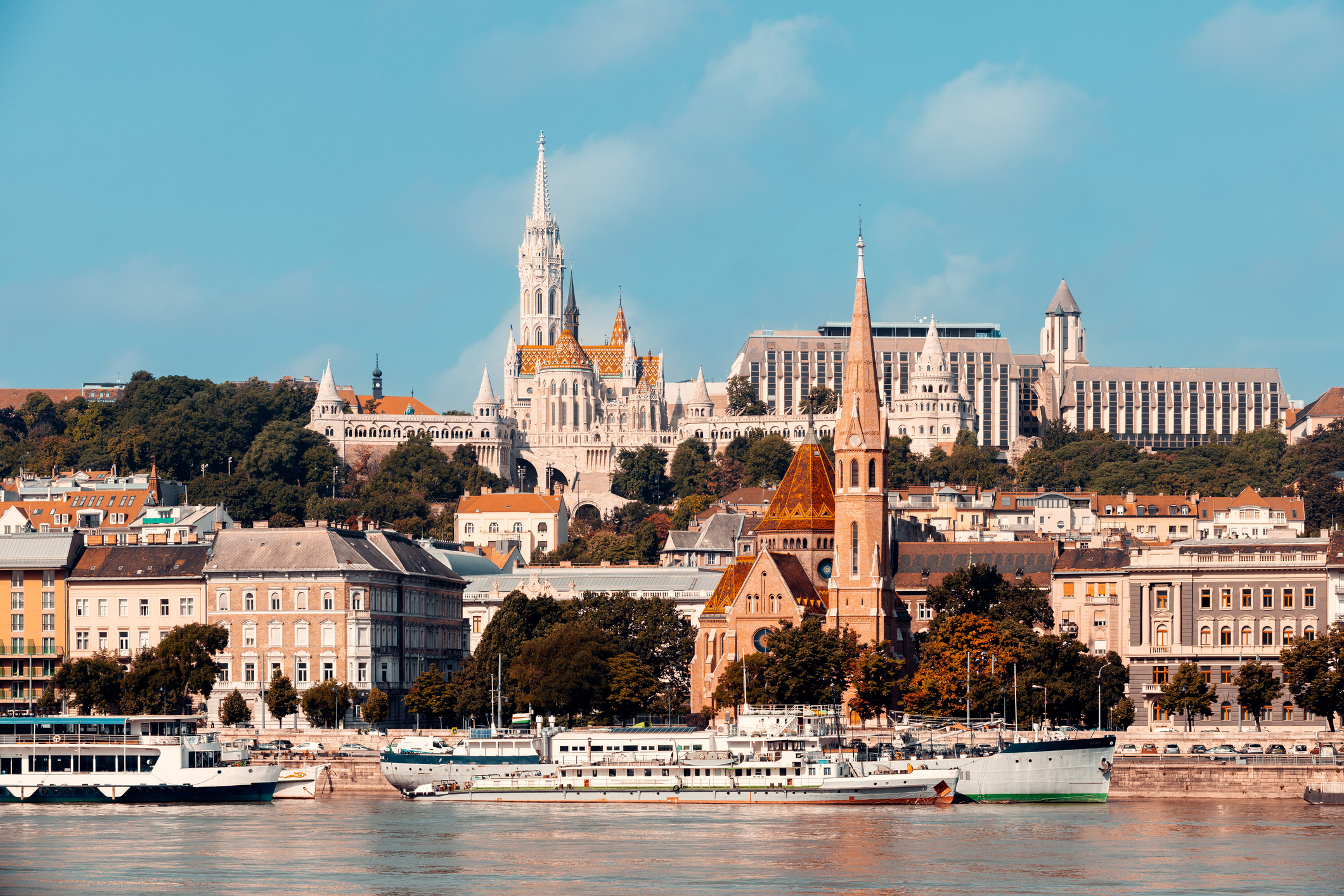Great Values in Overseas Trips
The dollar is down, but your money goes further if you know where to look.
The weak dollar doesn't have to dash your international travel plans. Below, we feature five places around the world where the greenback still thrives. And check out our slide show 10 Destinations Where Your Dollar Goes Far for the skinny on these and five more bargain destinations.
- 10 Dollar-Stretching Destinations
- Plastic Rules When Traveling Abroad
- Value Vacations

Lisbon, Portugal: Western Europe's sweet spot
The biggest bargain in Western Europe this summer is Portugal. Deals abound because the nation's low profile keeps it off many tourists' radar screens.
Lisbon is a mix of beach, medieval character and urban sophistication. It has the world-class dining and shopping you would expect from a European capital. The narrow streets, small city squares and trams of the Alfama historic district give you Old Europe; the Bairro Alto, the hub of Lisbon's nightlife, parties like New Europe.

Sign up for Kiplinger’s Free E-Newsletters
Profit and prosper with the best of expert advice on investing, taxes, retirement, personal finance and more - straight to your e-mail.
Profit and prosper with the best of expert advice - straight to your e-mail.
During the summer months, locals and tourists alike exit the city to crowd nearby beaches. "Lisbon forces you to relax," says Tom Meyers, editor of the Web site Eurocheapo.com and a frequent traveler to Portugal.
For convenience and the biggest bang for your euro, book a hotel in the central districts of the city, such as Alfama and Bairro Alto, Meyers recommends. Four-star hotels there run about $135 per night in July and only $100 in September.
A night on the town in Lisbon, where a drink is two to three euros, costs a fraction of a good time in London or Paris. "You don't return to your hotel at night feeling as if you've been robbed," Meyers says.
A Lisboa Card is a must-have when touring the city. It grants you unlimited use of nearly all public transportation, plus discounts for admission at museums and monuments. The card also knocks 65% off many bus and tram tours. Cards are sold at kiosks and Turismo de Lisboa offices throughout Lisbon. You can buy them in one-day, two-day or three-day increments. A one-day card costs about $17.
THE LOWDOWN ON LISBON
WHAT YOU'LL PAY: Direct round-trip flights from Chicago to Lisbon cost about $1,100 in June and $800 in September when you book in advance. Four-star hotels in central Lisbon generally run $135 to $225 per night in July, and about 35% less in September and October.
SHOULDER SEASON: Crowds drop in September and October, but there's no less ambience.
BEST DINING BARGAIN: The best deal won't be at a local bistro but at the Instituto do Vinho do Porto (Port Wine Institute). There you can try more than 300 vintages of Portugal's signature beverage. Tasting prices vary.

Wellington, New Zealand: Down Under Deal
The dollar goes further in New Zealand than it does in Australia, and New Zealand's destinations and scenery rival those of its bigger neighbor. Wellington, on the southern tip of the North Island, is a great launch pad. New Zealand's capital has a stunning harbor encircled by rolling green hills. Four-star hotels near the waterfront and central shopping district start at $130 per night. A night at a four-star spa in Wellington will cost about $140.
Hawke's Bay and Marlborough -- two major wine regions -- are half a day's travel from Wellington. You can stay in quaint bed-and-breakfasts for less than $75 per night in Hastings, the center of the Hawke's Bay region, which has more than 70 wineries. Marlborough, world-famous for Sauvignon Blanc, is a four-hour drive from Wellington if you take the ferry across the Cook Strait to the South Island.
Thrill-seekers head to the South Island to hike Mount Cook or to go bungee jumping near Queenstown, says Ann Lipschitz, a San Diego travel agent who visits New Zealand often to see relatives. Hotel rooms typically run $120 per night near Mount Cook, New Zealand's highest mountain. Bungee-jumping packages start at $60 in Queenstown.
THE LOWDOWN ON WELLINGTON
WHAT YOU'LL PAY: For a flight from Chicago, round-trip fares vary from $2,200 in June to $1,500 in September. You can book four-star or luxury accommodations for less than $140 a night.
SHOULDER SEASON: For deals, visit from September to November (New Zealand's spring season).
BEST SHOPPING BARGAIN: In a country that has more sheep than people, think wool.
BEST DINING BARGAIN: Steamed green-lipped mussels and a glass of local Sauvignon Blanc.

Santiago, Chile: Best Deal on a Continent
South America is a bargain now, and Santiago, Chile, is a fine one-stop destination. You can surf the Pacific, tour the wineries, hit the slopes and explore the Victorian elegance of nearby Valparaiso -- all in day trips from Santiago.
And the price is right. For about $60 a day, you can dine in nice restaurants and sleep in cozy accommodations, says Kathleen Munnelly, South America editor for Lonely Planet guidebooks. For $150 a day, you can enjoy luxuries that would commonly cost twice as much in North America or Europe, she says.
You won't run out of things to do in Santiago. Enjoy the laid-back cafés and restaurants in the bohemian Bellavista district, with live music after 11 p.m. Or get your fill of seafood at the Mercado Central market.
Seasons, of course, are the opposite of those in North America. June through August is winter, and September through November is spring. The ski-and-snowboard season runs from June to October. Santiago maintains its mild climate throughout the year, but many of the top ski resorts are within an hour's drive of the city. And if you go to Parque Nacional Villarrica, near the resort town of Pucón, you can ski on a smoking volcano. A three-star hotel in Pucón costs about $120 a night during peak season and drops to $80 a night in September, when there's still good powder on the slopes.
To get a tax break, stick with the nicer hotels, says Wayne Bernhardson, author of the guidebook Moon Handbooks Chile. Under Chilean law, foreign tourists do not owe the 19% value-added tax for hotel stays, but hotel staff must fill out the paperwork for you to get the tax break. Smaller hotels may not want to mess with the red tape because it's costly for them to keep track of the records. Generally, hotels with two or more stars will give you the refund, Bernhardson says. Be sure to ask about it when you book your accommodations.
Chile does levy some unexpected fees. All arriving U.S. tourists must pay a one-time fee of $100, which is good for the life of your passport. And there's a departure tax of up to $26.
THE LOWDOWN ON SANTIAGO
WHAT YOU'LL PAY: Round-trip flights from Chicago to Santiago cost about $1,200 per person in June through August, but drop to $1,000 per person in September.
SHOULDER SEASON: Hotels across Chile cost about 30% less In October, November and December than during the peak summer tourist season, which starts in January.
BEST DINING BARGAIN: You've already had the sea bass, so try the wines, especially those made with Carmenere, a grape originally from the Bordeaux region of France. Excellent vintages cost less than $10 a bottle.

Dubrovnik, Croatia: Riviera on the Adriatic
Want the azure ocean views of the Italian Riviera and Greek Isles for less? Take a trip to the Dalmatian Coast of Croatia. Although it has been a destination for European tourists for years, it has gained popularity among Americans only recently, as the dollar has fallen against the euro. For beachside accommodations, great traditional meals and Old World charm, you'll pay less than $180 a day.
Dubrovnik, called the Pearl of the Adriatic, is the focal point of a Croatian vacation. The walled city's beautiful 12th-century gray-stone buildings with orange-tile roofs make it distinct from other seaside spots.
The more than 1,000 islands of the Dalmatian Coast look like Greece and offer a taste of Italy. The cuisine is basic, seasonal and fresh. "They are not being organic to be trendy," says Jane Ruth, a Harleysville, Pa., resident and retired restaurateur who gives small-group tours of Croatia. "It's just always been that way." Stroll the Stradun, the main promenade in Dubrovnik, to find reasonably priced restaurants that serve great local dishes.
Unlike in Italy or Greece, the hotel industry in Croatia is not highly developed. A few major chains have moved into Dubrovnik, and there are some hotels left over from the Soviet era. But the rooms tend to be overpriced, and the decor would make Stalin feel right at home. Instead, stay in what Croatians call private accommodations. These are small apartments that residents have built as additions to their homes. Once only savvy travelers who inquired at the village square could take advantage of such deals. But thanks to the Internet, you can check out photos of private accommodations and make reservations online before you arrive.
Airfare to Croatia will be the most expensive part of your trip because there are no direct flights to Dubrovnik. During peak season in June, a multiple-flight package from Chicago to Dubrovnik costs $1,800 per person. For a better deal, fly to a major European hub city, such as Amsterdam, London, Paris or Rome, and then hop on a European discount airline, such as the U.K.'s Wizz Air, to the central port city of Split. From there, you can buy a $160 ticket on Croatia Airlines to Dubrovnik, which is on the southeastern tip of the country's coast. That arrangement will cost about $500 less than a flight package.
THE LOWDOWN ON DUBROVNIK
WHAT YOU'LL PAY: You can rent a one-bedroom private accommodation on the beach, with an ocean-view balcony, for $130 a day in peak season. Find one at www.homeaway.com or www.vrbo.com. Gate 1 Travel offers a ten-day vacation package from New York City that includes airfare and a hotel on the Dalmatian Coast for $2,500 per person.
SHOULDER SEASON: September and October.
BEST DINING BARGAIN: You can buy a three-course dinner of homemade sausage, roasted lamb or fish, and fritule for about $20 a person in restaurants along the Stradun.

Ho Chi Minh City, Vietnam: Exotic Escape
For the price of a hardcover novel to take to the beach, you can actually stay at a good hotel near the shore in Vietnam. This year, Vietnam ended a decade-long policy of "managed devaluation" that caused its currency to weaken 30% against the U.S. dollar. But the greenback still packs a punch.
Ho Chi Minh City, formerly Saigon, is the ideal spot to find Vietnam values. Less touristy than Hanoi, HCMC has a thriving dining and entertainment scene, says Kim Fay, editor of the guidebook To Asia With Love. She recommends dining at Phu Xuan, which serves traditional cuisine from the imperial city of Hue. "But it is unlike any imperial cuisine you will find elsewhere," says Fay. The owner of the restaurant is the granddaughter of a chef to the last emperor, and she makes sure the dishes are authentic, not dumbed down for tourists. A gourmet meal costs less than $20 per person, including drinks. Fine accommodations are affordable as well. You can stay in a four-star luxury hotel for about $80 per night.
Only 120 miles away from Ho Chi Minh City is Mui Ne. Unlike other popular beachfront resorts in Southeast Asia, this one remains relaxed and uncrowded, says Dave Taylor, a 49-year-old security director from Philadelphia who visits Vietnam regularly. Beyond the palm trees of this tropical beach stretch the Sahara-like white sand dunes of the Binh Thuan desert. Rooms with an ocean view range from $20 to $100 per night, depending on the level of luxury you want.
THE LOWDOWN ON HO CHI MINH CITY
WHAT YOU'LL PAY: Round-trip airfare from Chicago costs about $1,700 in the summer and $1,300 in the fall.
SHOULDER SEASON: Miss most of the wet season by going in November or December.
BEST DINING BARGAIN: Pho, a soup of boiled beef, noodles and broth, is the national dish and sells for less than a buck.
Next: 10 Destinations Where Your Dollar Goes Far
Get Kiplinger Today newsletter — free
Profit and prosper with the best of Kiplinger's advice on investing, taxes, retirement, personal finance and much more. Delivered daily. Enter your email in the box and click Sign Me Up.
-
 Stock Market Today: Stocks Gain on Tech, Auto Tariff Talk
Stock Market Today: Stocks Gain on Tech, Auto Tariff TalkThe Trump administration said late Friday that it will temporarily halt tariffs on some Chinese tech imports.
By Karee Venema
-
 Sam's Club Plans Aggressive Expansion: Discover Its New Locations
Sam's Club Plans Aggressive Expansion: Discover Its New LocationsSam's Club expansion plans will open up to 15 new stores each year. Learn where they plan to open in 2025.
By Sean Jackson
-
 Roth IRA Contribution Limits for 2025
Roth IRA Contribution Limits for 2025Roth IRAs Roth IRA contribution limits have gone up. Here's what you need to know.
By Jackie Stewart
-
 Four Tips for Renting Out Your Home on Airbnb
Four Tips for Renting Out Your Home on Airbnbreal estate Here's what you should know before listing your home on Airbnb.
By Miriam Cross
-
 Five Ways to a Cheap Last-Minute Vacation
Five Ways to a Cheap Last-Minute VacationTravel It is possible to pull off a cheap last-minute vacation. Here are some tips to make it happen.
By Vaishali Varu
-
 Best Places to Visit Where the Dollar Is Strong
Best Places to Visit Where the Dollar Is StrongFrom the Americas and Europe to Africa and Asia, we list the 10 best places to travel to where the U.S. dollar is the strongest.
By Quincy Williamson
-
 24 Best Travel Websites and Apps to Find Deals and Save You Money
24 Best Travel Websites and Apps to Find Deals and Save You MoneyTravel Use Kiplinger's guide to the best travel websites and find discounts and deals so you can vacation without breaking the bank.
By Rivan V. Stinson
-
 How to Figure Out How Much Life Insurance You Need
How to Figure Out How Much Life Insurance You Needinsurance Instead of relying on rules of thumb, you’re better off taking a systematic approach to figuring your life insurance needs.
By Kimberly Lankford
-
 Amazon Big Deal Days Is Coming! We’ve Got All the Details
Amazon Big Deal Days Is Coming! We’ve Got All the DetailsAmazon Prime To kick off the holiday season with a bang, Amazon Big Deal Days runs Tuesday, October 8 and Wednesday, October 9.
By Bob Niedt
-
 How to Shop for Life Insurance in 3 Easy Steps
How to Shop for Life Insurance in 3 Easy Stepsinsurance Shopping for life insurance? You may be able to estimate how much you need online, but that's just the start of your search.
By Kaitlin Pitsker